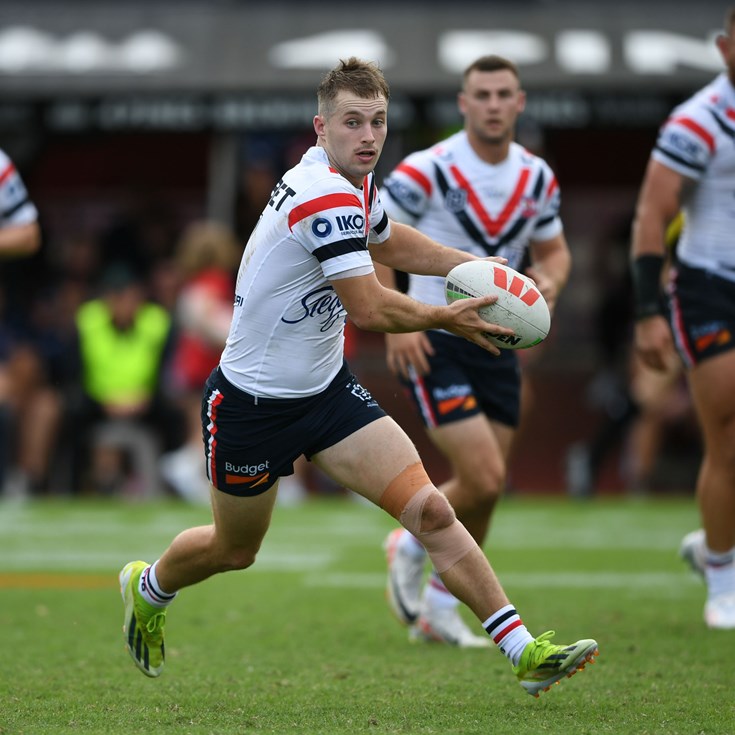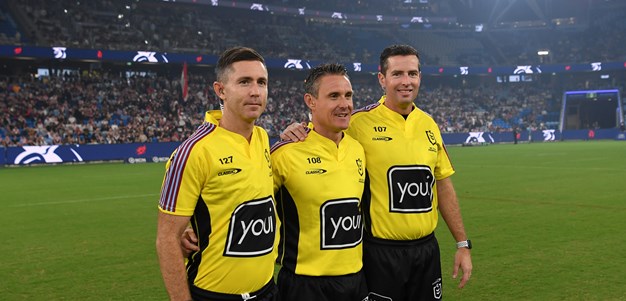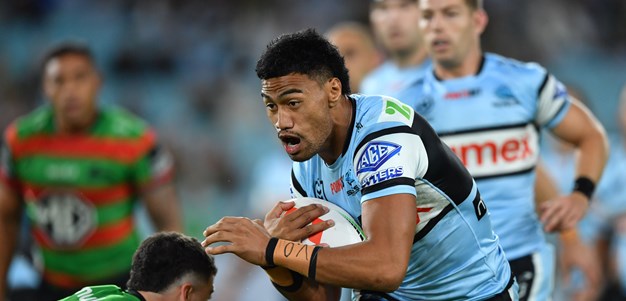Although largely forgotten these days, the life of George Cummins contained more drama, intrigue and glory then you would find in a Cecil B De Mille production. At nearly six feet tall and weighing in at 14 stone, Cummins was one of those big country blokes upon which the Anzac legend was built.
Originally from the Manning River district, Cummins represented Country in Rugby Union in 1909 before coming to Sydney to train as a teacher. He then joined Balmain's rugby league side and took to the new code like a duck to water.
Cummins was part of the NSW team that toured New Zealand in 1912, the first team from Australia to ever visit the Shaky Isles in the league code, although his participation in the campaign was limited to three appearances due to injury.
An all-round sportsman who was also an accomplished pianist, Cummins appeared in 37 games for Balmain between 1912-15 posted four tries and 22 goals.
He had many fine moments in club matches, perhaps none more outstanding than when he stole the ball from Newtown's Arthur Beed in what would today be termed "a one-on-one strip" to score the match winner for Balmain against Newtown at Erskineville Oval on August 1, 1914. That loss was to ultimately cost Newtown the premiership, as they finished one premiership point behind South Sydney.
In 1915 he was one of the stars of a Balmain side that won the club's first premiership, appearing in 14 of their 15 matches and scoring 46 points from two tries and 20 goals to be second on the list of the team's pointscorers behind the great Chook Fraser.
George Cummins was appointed as a Second Lieutenant on enlisting in January 1916, and then promoted to Lieutenant and assigned to the 55th Battalion after the AIF was restructured. On arrival in France they had four days of training at the infamous Bull Ring in Etaples before being thrown in the deep end, a phrase that would prove to be literally true for some.
Cummins' battalion had their first taste of action through the human mincing machine at Fromelles on July 20 1916 and he became another statistic from the battle, although being captured and made a Prisoner of War was a better fate than that which befell many of his mates.
Although the prisoner of war camps during the First World War were not as bad as the conditions endured in the conflict of 1939-45 they were far from holiday resorts either. The lack of food that eventually weakened the stomachs and resolve of the German people was felt more acutely in the prisoner of war camps and though some had to work they did not have the extreme brutalities that marked the German and Japanese camps 20 years later.
There are several photographs of Cummins in various camps, and though life may have been more comfortable for the officer class they were still not immune from sickness and disease. His condition deteriorated whilst in confinement and, under a repatriation program that had been agreed to by both sides, he was interned in Holland from June 1918 before being repatriated to England precisely two weeks after the war ended with pneumonia.
At the age of 34 he was obviously getting towards the end of his career by the time he joined Sydney University RLFC on his return to Australia. Having been denied the years in which he would have ripened into footballing maturity, one might think he was itching to get back into the footy but the reality was that he had been weakened from his incarceration and was still recovering. As he had enrolled at Sydney University to further his academic credentials he was reluctantly coaxed into playing again by his old representative team mates Paddy McCue and Sandy Pearce to help out the fledgling Sydney University club in their second season.
He must have still gone OK, judging by the reports:
"Ample George
George Cummins, formerly Balmain and State rep of 1913, who was a prisoner of war in Hunland for some time, will again don shinguards for Varsity in League football. Though sadly impaired in health as a result of Fritz's care, he has recovered, and despite the fact that he weighs in the vicinity of 15 stone is galloping like a dog with a tin attachment. Should he regain his sureness of boot he should prove a decided acquisition as a goaler, and his experience and ampleness will be an asset in the scrums. – Pongo"
From Smiths Weekly, April 23 1921
"George Cummins, the burly ex-representative forward who now strips for Uni, is fast regaining his form in the loose, and when he regains his old kicking form it will not be safe to be penalized within 60 yards of the line when his trusty boot is on the job. George scored a fine try against NS and was over the line on another occasion, but could not ground the ball. His ambition is an MB degree, and if he goes for it with the same determination as he goes for the goal line it will take more than a few eccentric examiners to stop him."
RLN June 4 1921 p 6
He played eight premiership games for University in 1921 and also appeared on their tour of the north coast, which would have been a nice homecoming tour after his years away. He retired after that season and concentrated on completing his studies, and his hard work paid off when he graduated as a doctor in 1928. The Balmain DRFLC minutes of April 4 1928 has him replying to the club's letter of congratulations and offering his services as honorary medical officer.
Cummins lived in Haberfield and Marrickville in contented obscurity between the wars but he again answered the call to serve when one of his foes from Fromelles, Adolf Hitler, unleashed the dogs of war once more in 1939.
A qualified doctor by then, he enlisted in the Australian Army Medical Corps in June 1940 and served pretty much all through that war until his discharge in January 1945.
That year he took over as coach of the Sydney University RUFC first grade from another former Leagueie Paddy McCue, his old skipper when they toured New Zealand. At the same time his son, George Junior (who would himself graduate from Sydney University as a doctor in 1947), retired as a player to take over as coach of the second grade, giving the family a unique quinella. Cummins led the Varsity First XV to the Shute Shield when they defeated Parramatta in that year's Grand Final.
He died on Valentine's Day 1953.



